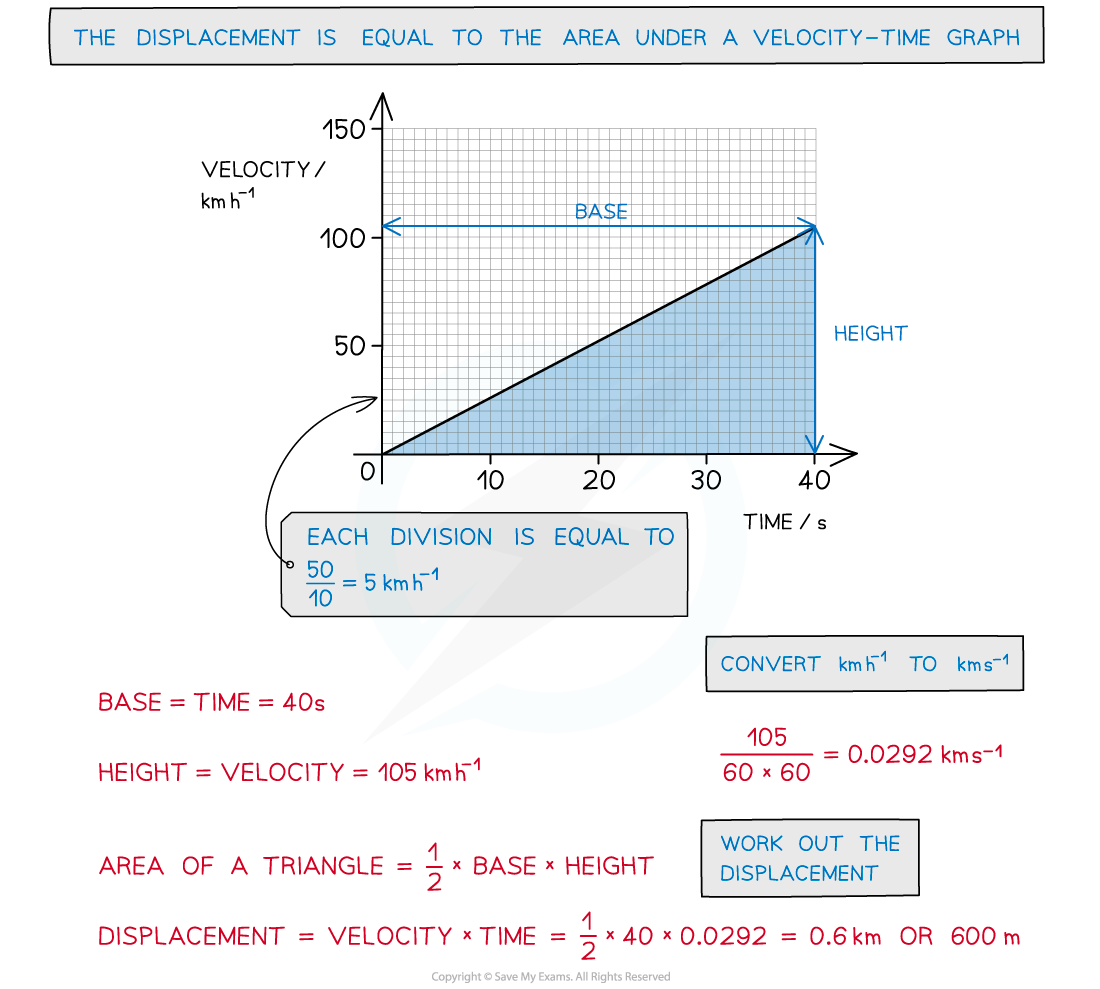Motion Graphs
- Three types of graphs that can represent motion are displacement-time graphs, velocity-time graphs, and acceleration-time graphs
Displacement-Time Graph
- On a displacement-time graph…
- Slope equals velocity
- The y-intercept equals the initial displacement
- A straight(diagonal) line represents a constant velocity
- A curved line represents an acceleration
- A positive slope represents motion in the positive direction
- A negative slope represents motion in the negative direction
- A zero slope (horizontal line) represents a state of rest
- The area under the curve is meaningless
 Displacement-time graphs displacing difference velocities
Displacement-time graphs displacing difference velocities
Velocity-Time Graph
- On a velocity-time graph…
- Slope equals acceleration
- The y-intercept equals the initial velocity
- A straight line represents uniform acceleration
- A curved line represents non-uniform acceleration
- A positive slope represents an increase in velocity in the positive direction
- A negative slope represents an increase in velocity in the negative direction
- A zero slope (horizontal line) represents motion with constant velocity
- The area under the curve equals the change in displacement
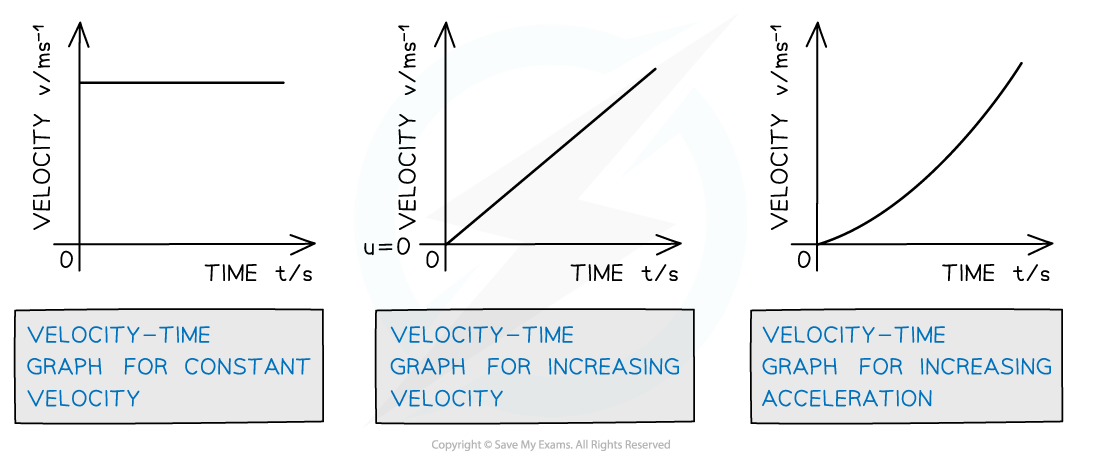 Velocity-time graphs displacing different acceleration
Velocity-time graphs displacing different acceleration
Acceleration-Time Graph
- On an acceleration-time graph…
- Slope is meaningless
- The y-intercept equals the initial acceleration
- A zero slope (horizontal line) represents an object undergoing constant acceleration
- The area under the curve equals the change in velocity
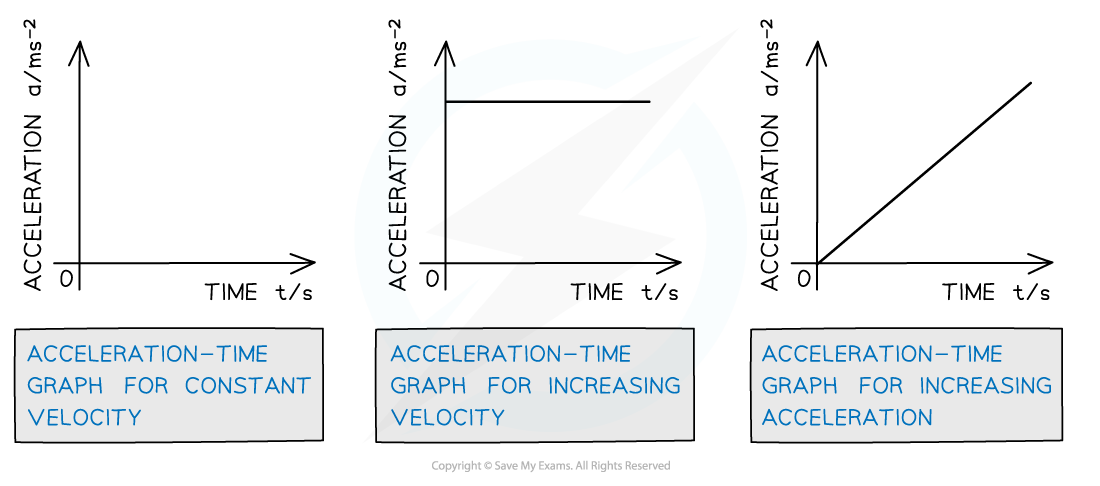
How displacement, velocity and acceleration graphs relate to each other
Worked Example
Tora is training for a cycling tournament.
The velocity-time graph below shows her motion as she cycles along a flat, straight road.
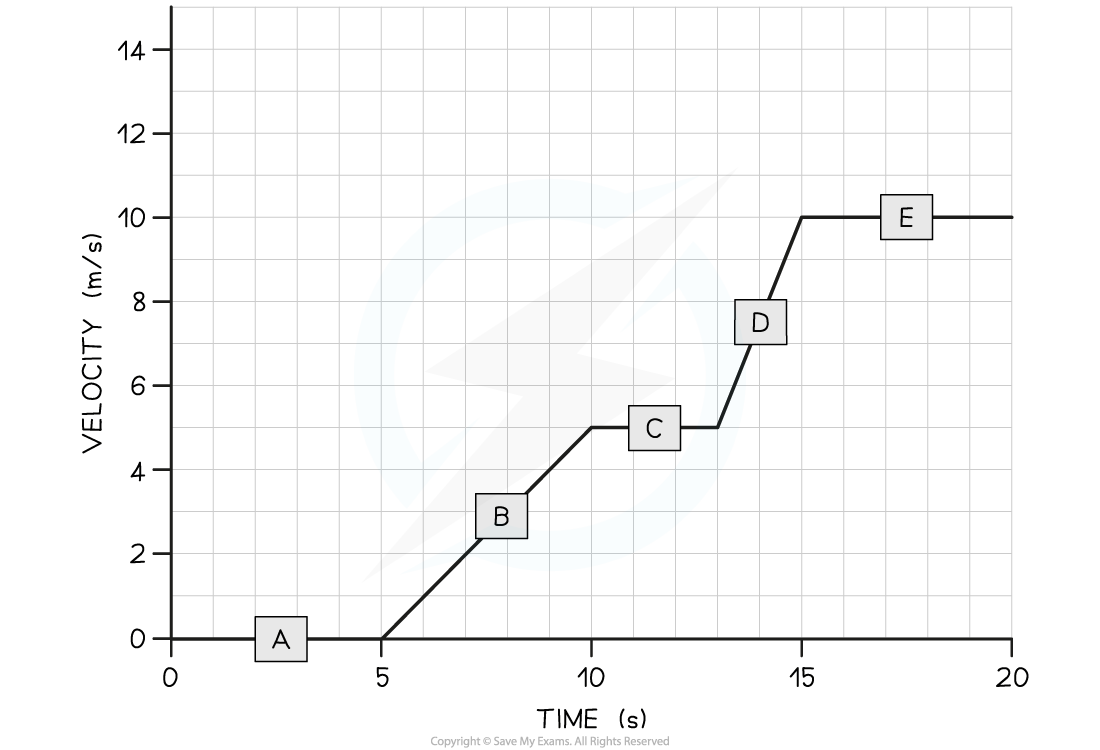
(b) Calculate Tora’s acceleration between 5 and 10 seconds.
Part (a)
Step 1: Recall that the slope of a velocity-time graph represents the magnitude of acceleration
- The slope of a velocity-time graph indicates the magnitude of acceleration
Therefore, the only sections of the graph where Tora is accelerating is section B and section D
- Sections A, C, and E are flat – in other words, Tora is moving at a constant velocity (i.e. not accelerating)
- The slope of a velocity-time graph indicates the magnitude of acceleration
Step 2: Identify the section with the steepest slope
- Section D of the graph has the steepest slopeHence, the largest acceleration is shown in section D
Part (b)
Step 1: Recall that the gradient of a velocity-time graph gives the acceleration
- Calculating the gradient of a slope on a velocity-time graph gives the acceleration for that time period
Step 2: Draw a large gradient triangle at the appropriate section of the graph
- A gradient triangle is drawn for the time period between 5 and 10 seconds below:
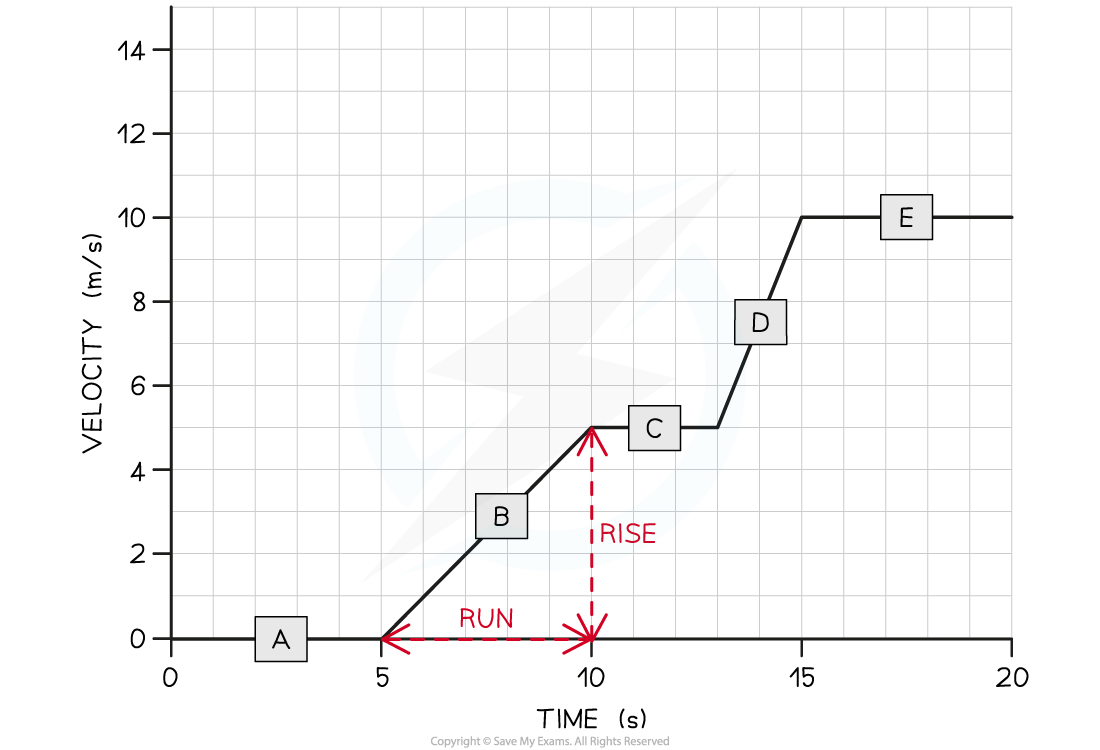
Step 3: Calculate the size of the gradient and state this as the acceleration
- The acceleration is given by the gradient, which can be calculated using:
acceleration = gradient = 5 ÷ 5 = 1 m/s2
- Therefore, Tora accelerated at 1 m/s2 between 5 and 10 seconds
Motion of a Bouncing Ball
- For a bouncing ball, the acceleration due to gravity is always in the same direction (in a uniform gravitational field such as the Earth's surface)
- This is assuming there are no other forces on the ball, such as air resistance
- Since the ball changes its direction when it reaches its highest and lowest point, the direction of the velocity will change at these points
- The vector nature of velocity means the ball will sometimes have a:
- Positive velocity if it is traveling in the positive direction
- Negative velocity if it is traveling in the negative direction
- An example could be a ball bouncing from the ground back upwards and back down again
- The positive direction is taken as upwards
- This will be either stated in the question or can be chosen, as long as the direction is consistent throughout
- Ignoring the effect of air resistance, the ball will reach the same height every time before bouncing from the ground again
- When the ball is traveling upwards, it has a positive velocity which slowly decreases (decelerates) until it reaches its highest point
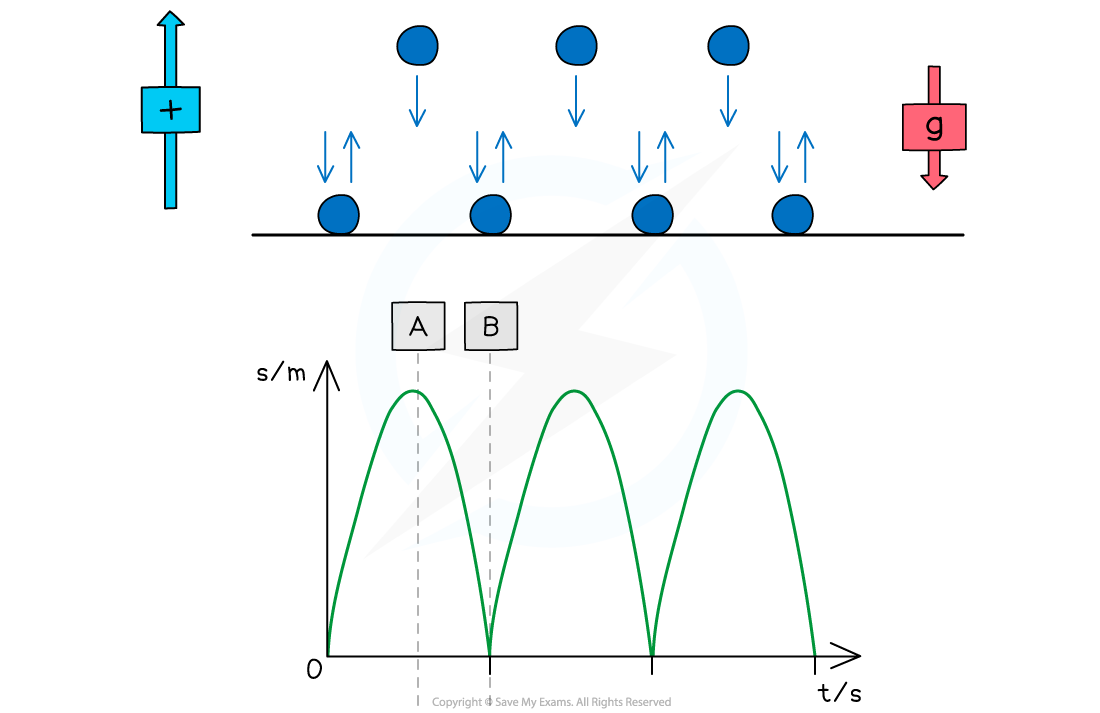
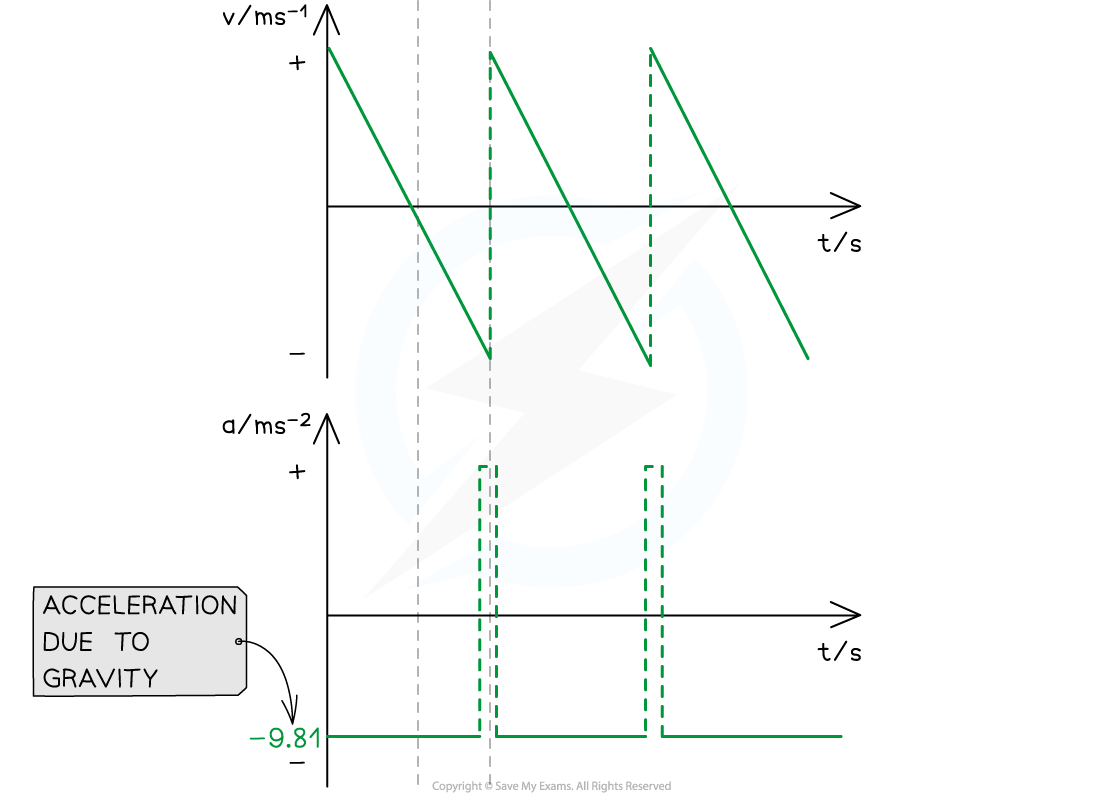
- At point A (the highest point):
- The ball is at its maximum displacement
- The ball momentarily has zero velocity
- The velocity changes from positive to negative as the ball changes direction
- The acceleration, g, is still constant and directed vertically downwards
- At point B (the lowest point):
- The ball is at its minimum displacement (on the ground)
- Its velocity changes instantaneously from negative to positive, but its speed (magnitude) remains the same
- The change in direction causes a momentary acceleration (since acceleration = change in velocity / time)
Worked Example
The velocity-time graph of a vehicle travelling with uniform acceleration is shown in the diagram below.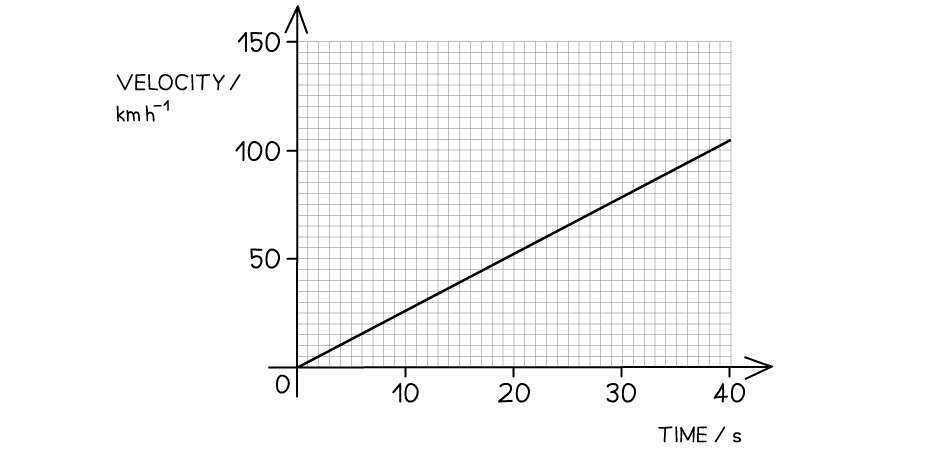 Calculate the displacement of the vehicle at 40 s.
Calculate the displacement of the vehicle at 40 s.
